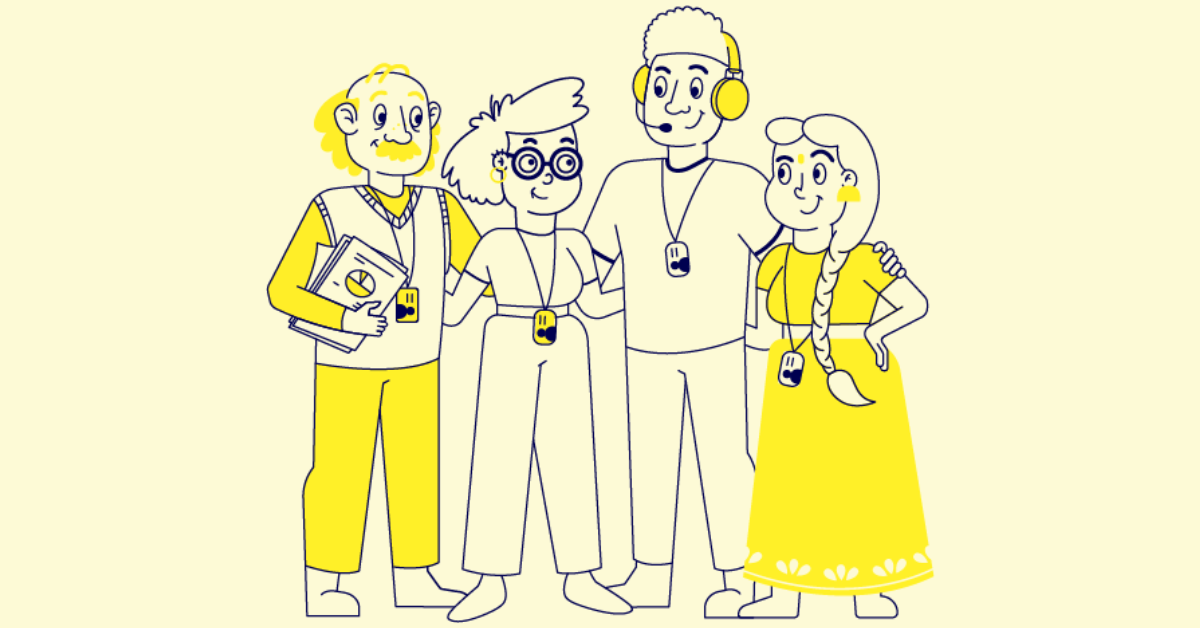Great teamwork doesn’t happen on its own. Not even when everyone does their job well and results are achieved. A good team atmosphere, effective collaboration, and trust are built from small, repeated moments – a morning greeting, an attentive look in a meeting, encouraging feedback, or the way misunderstandings are handled before they grow into real issues.
As a team leader, you are at the heart of these interactions. Leadership isn’t just about setting goals and managing resources – it’s about working with people. It’s about listening, observing, and guiding the team when communication starts to break down.
Finding harmony – sometimes it just needs fine-tuning
Every team is a unique mix of personalities, backgrounds, and communication styles – and that’s exactly where its strength lies. Sometimes harmony is found immediately; other times it takes time and effort. When we learn to give feedback openly, resolve conflicts constructively, and express our thoughts clearly, collaboration improves and the atmosphere lightens. Even small changes can significantly improve how it feels to work together.
When friction arises, the team leader’s role becomes even more important. It’s crucial to notice what’s going on beneath the surface and address issues early. Tackled early and constructively, challenges can lead to valuable insights and new understanding within the team.
Good communication isn’t a bonus – it’s the foundation
Constructive team interaction is not a “nice to have” – it’s a core element of an effective, sustainable and healthy work community. As a team leader, you have a huge influence on the tone and culture of your team. When communication flows, collaboration is smoother, conflicts are addressed early, and people feel seen and valued.
Managing different personalities in a team is one of the most essential – and often most challenging – aspects of leadership. By understanding how different people think, behave, and react, you can build a stronger, more adaptable and collaborative team. Auntie can support you in this process by offering practical tools and guidance by our mental wellbeing professionals to help you lead diverse individuals more effectively – and bring out the best in every team member.
Here are some key principles and practical tips:
1. Understand the value of personality differences in your team, you might have:
- analytical thinkers who want facts before they act
- quick idea-generators who thrive on enthusiasm and creativity
- precise implementers who ensure things go as planned
- social connectors who build bridges and nurture the team climate.
There is no single “best” type. The strongest teams are made up of diverse strengths. See these differences as assets.
2. Adjust your communication style to fit the person and the situation
Not everyone receives feedback, instructions, or ideas in the same way. For example:
- a fact-focused team member appreciates clear reasoning and time to reflect
- a spontaneous doer is energised by quick experiments and open brainstorming
- a cautious colleague needs safety and trust before opening up or contributing.
Adapt your communication to fit the audience.
3. Create space for different ways of participating
Not everyone speaks up loudly in meetings – but they may still have valuable input.
Make room for:
- written feedback or input ahead of meetings
- small group discussions
- facilitation techniques that bring quieter voices forward.
This helps everyone feel like a part of the team – in their own way.
4. Build shared ground rules
Differences aren’t a problem when your team has clear, agreed ways of working.
Together, decide on things like:
- How do we give feedback?
- How do we handle conflicts?
- How do we make sure everyone is heard?
Shared rules create a safe space where all personalities can thrive.
5. Know and develop your own leadership style
As a team lead, you bring your own personality and communication style into the team. It’s important to recognise how you respond to different people, what situations challenge you, and where you have room to grow.
Auntie’s Building Bridges Together package for team leaders offers a space to reflect on exactly these themes. You’ll get concrete tools for leading interaction between different people – and for strengthening the dynamics of your entire team.
To succeed:
- be genuinely interested in people, not just tasks
- build trust and listen actively
- take the lead in shaping communication – don’t assume it will sort itself out
- seek external support for team development when needed.
Do you want to improve your team’s atmosphere and strengthen collaboration?
Explore Auntie’s Building Bridges Together package – and build better interaction, one conversation at a time.
Writer:

Auntie
Auntie provides mental wellbeing services for employers who truly care about their people. Our services have been proven to boost employee satisfaction, productivity, and commitment while reducing the need for sick leave. Designed for different challenges at work and in life, Auntie’s service packages include a series of anonymous online sessions with mental wellbeing professionals. Already, more than 500 organisations across six countries offer Auntie’s preventive, needs-based, and fast-to-start services to their people. Founded in Finland in 2015, Auntie is growing rapidly. Today, we support and coach people in tough situations in 25 different languages.





